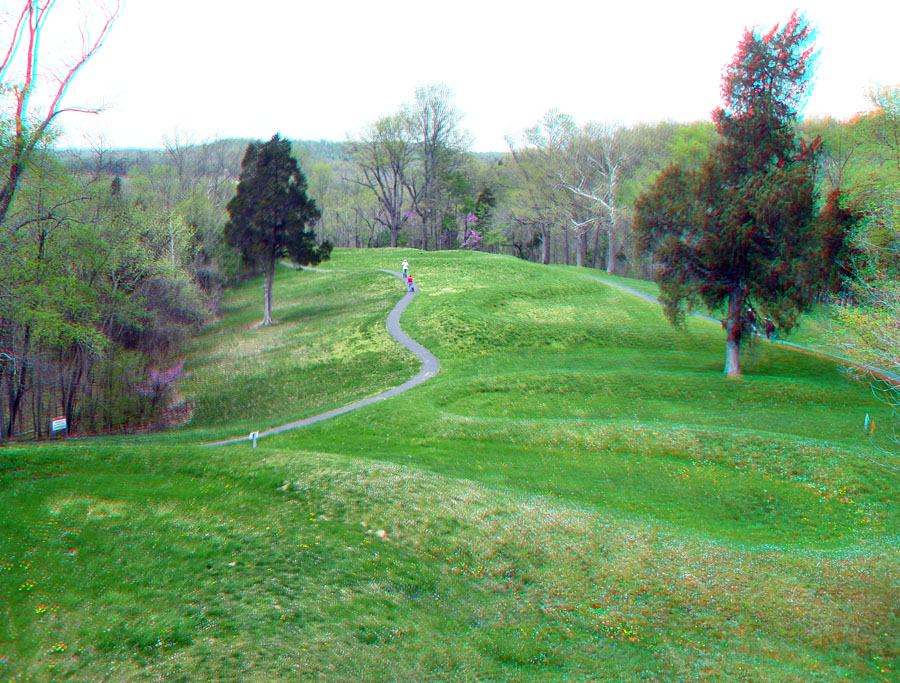
Serpent Mound is an internationally known National Historic Landmark built by ancient American Indian cultures of Ohio. It is an effigy mound (a mound in the shape of an animal) representing a serpent with a curled tail. Nearby are three burial mounds—two created by the Adena (Hopewell) culture tradition (800 B.C.–A.D. 100), and one by the Fort Ancient culture tradition (A.D. 1000–1650).
Thousands of years ago, people populated the Ohio landscape and constructed mounds and massive earthworks (see a Map of Ohio Mounds & Earthworks). In the late 19th century, Harvard University archaeologist Frederic Ward Putnam excavated Great Serpent Mound, but he found no artifacts in the earthworks that might allow archaeologists to assign the effigy to a particular culture or age. Based largely on the nearby presence of burial mounds, later archaeologists attributed the effigy to the Hopewell (Adena) culture that flourished from 800 B.C. to A.D. 100. This theory on the site’s origin was accepted until a 1991 site excavation used radiocarbon dating to determine that the mound was approximately 900 years old. This would suggest that the builders of the Serpent belonged to the Fort Ancient culture (A.D. 1000–1500). In 2014, another team of archaeologists presented new radiocarbon dates for the Serpent suggesting that it was built by the Hopewell (Adena) culture at around 300 B.C. Future archaeological work may clarify the age of Serpent Mound.